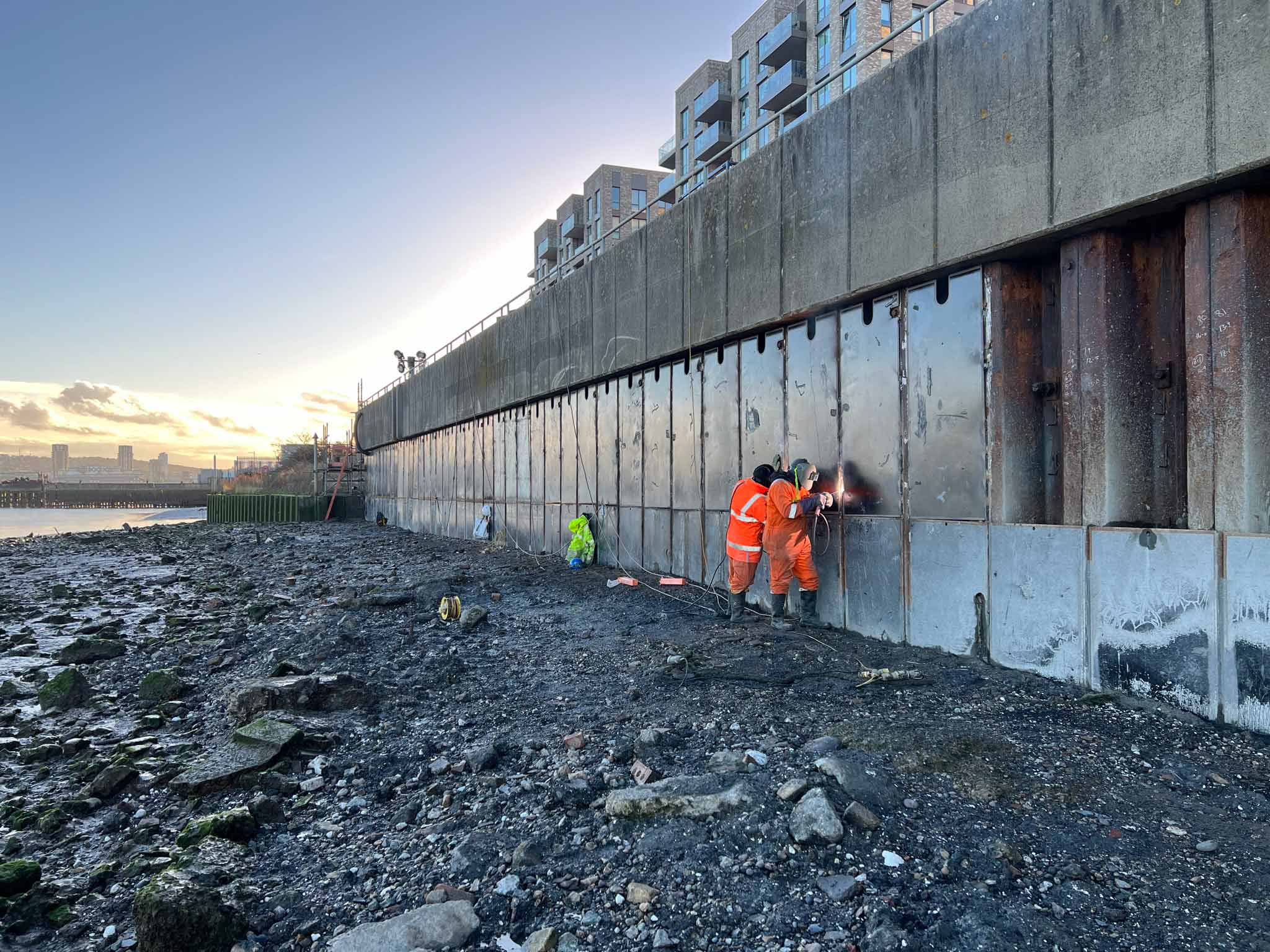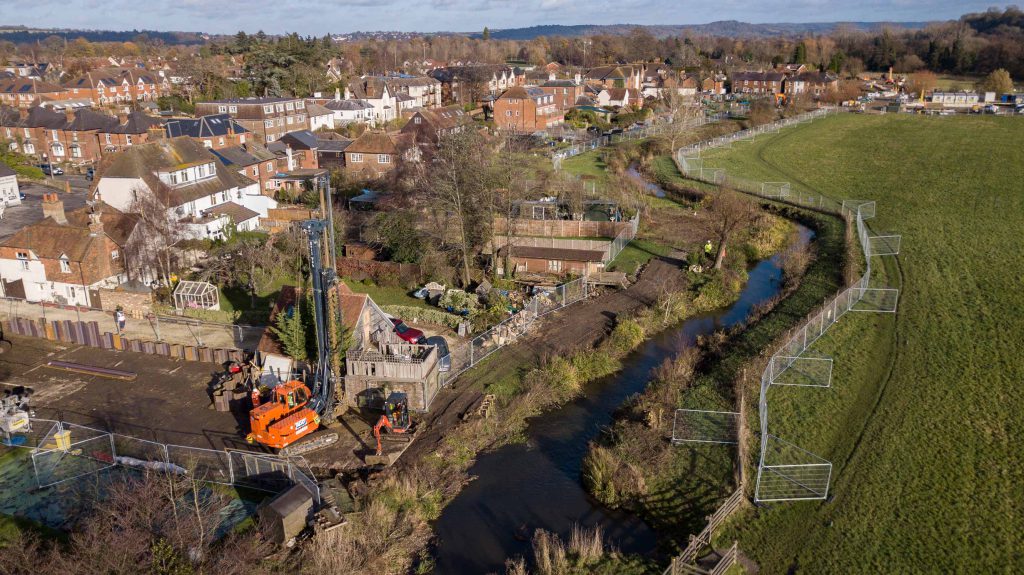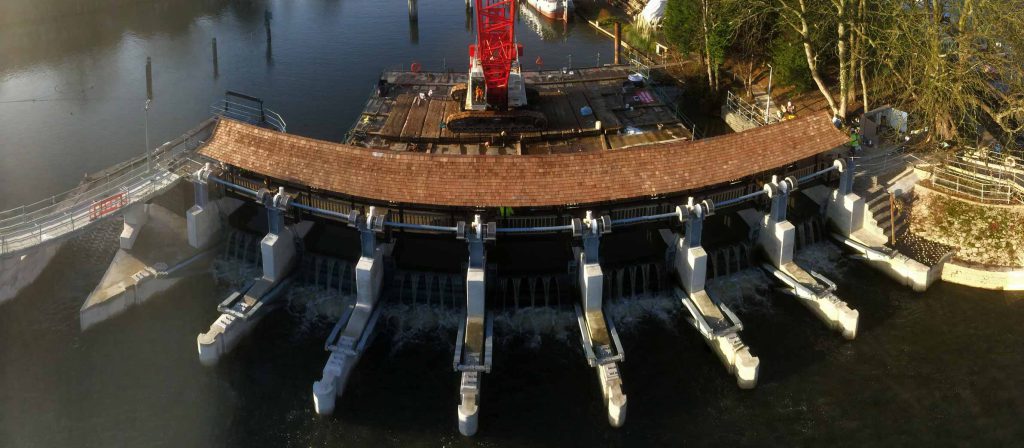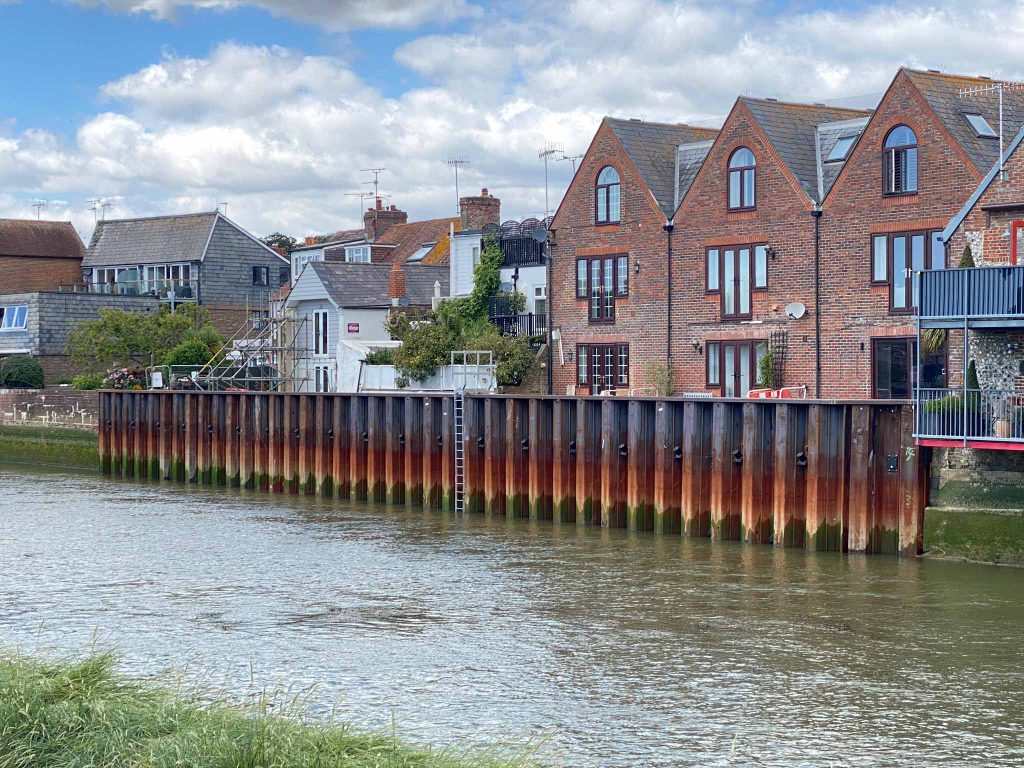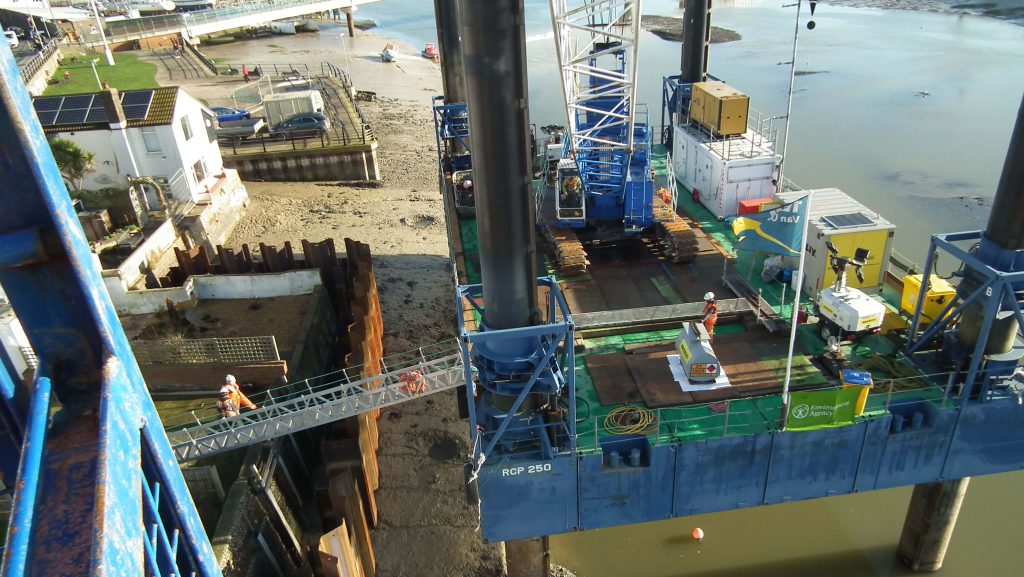2019 – 2020
Trinity Hospital River Wall Repairs
Royal Woolwich Borough Council
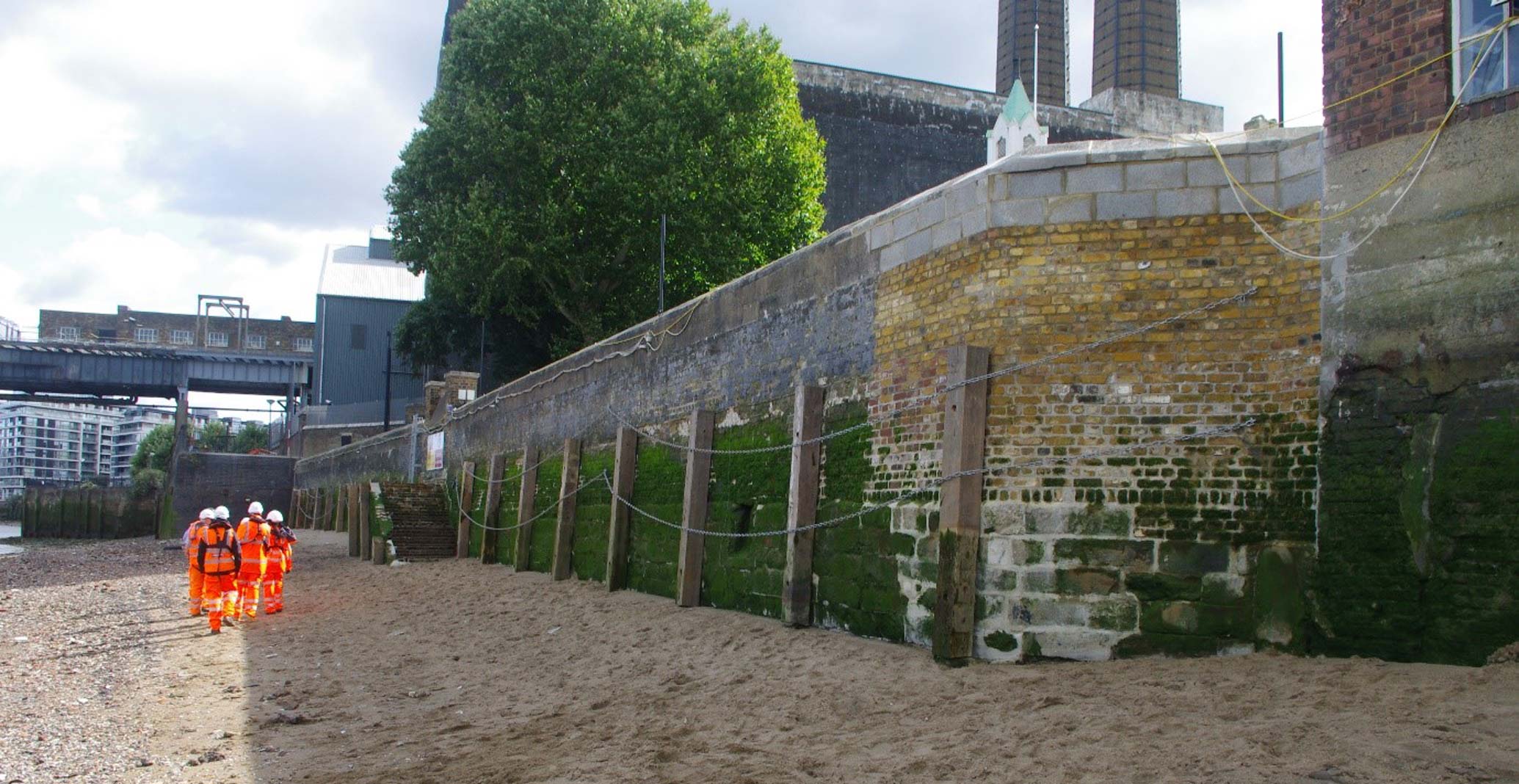
rIVer
Access
Multi
Disciplinary
Environmental
Enhancements
stakeholder
Management
PLa
Liaison
As part of the 10 year TE2100 Framework, Mackley carried out repairs and the rebuild of the Thames river wall at Trinity Hospital in the East Greenwich Conservation Area.
Our teams carried out general refurbishment of the wall, jet washing, infilling gaps and repairing poor sections of brickwork, re-pointing with a lime based compound. The upstream corner of the wall also needed complete reconstruction and we reinstated the joint between Trinity Hospital and Crowley’s Wharf.
Main features of the project included:
We established a root protection system for an in-situ tree and propped the Grade II listed Trinity Hospital wall as protection for the duration of the works. Pali Radice raking piling was used along the wall to stabilise the existing structure so we placed over 200 2 tonne sandbags on the foreshore to protect the wall while the piling was taking place. We also protected the surface on the landside by creating a Cellweb® TRP, Geotec 2000 and Type 2 access track for our piling rig.
2017
Coldharbour Wall Remediation
Environment Agency & Balfour Beatty – TE2100
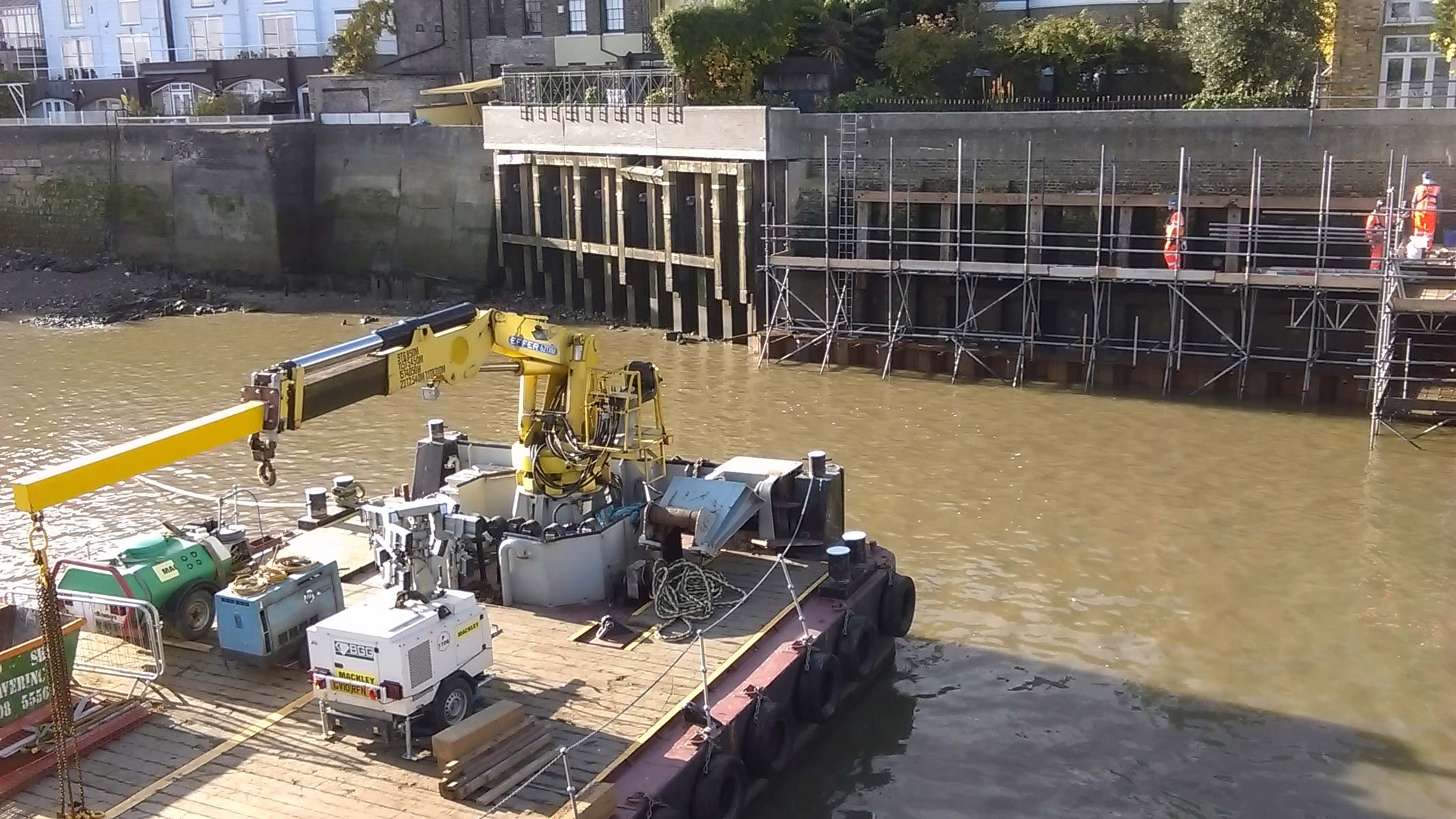
complex
Logistics
working & lifting
Afloat
restricted
Access
Tidal River
Working
PLa
Liaison
stakeholder
Engagement
protection works to
Foreshore
Mackley carried out remedial and protection works to Coldharbour Flood Wall and foreshore. With limited access and tidal restrictions, careful logistics planning and time management was needed. Materials were delivered to a safe loading area upstream and transported to site by Multi-Cat each ahead of each shift. At the unloading area, we used a temporary cantilever walkway which we had designed and constructed to also provide access to the wall to carry out the repairs. There, we used a temporary cantilever walkway which we had designed and constructed to provide access to the wall to carry out the repairs. We used reclaimed beach groynes for the timber fenders and installed/placed Kyowa rock bags at the foot of the wall to protect from tidal erosion & create habitat for small fish and plants.
Effective stakeholder management
Our strong public engagement enabled us, with the kind permission of the property owner, to pump the concrete infill through an adjacent property’s garden. We made sure this was completed in one day.
2016
Missing Link Walkway
Royal Woolwich Borough Council
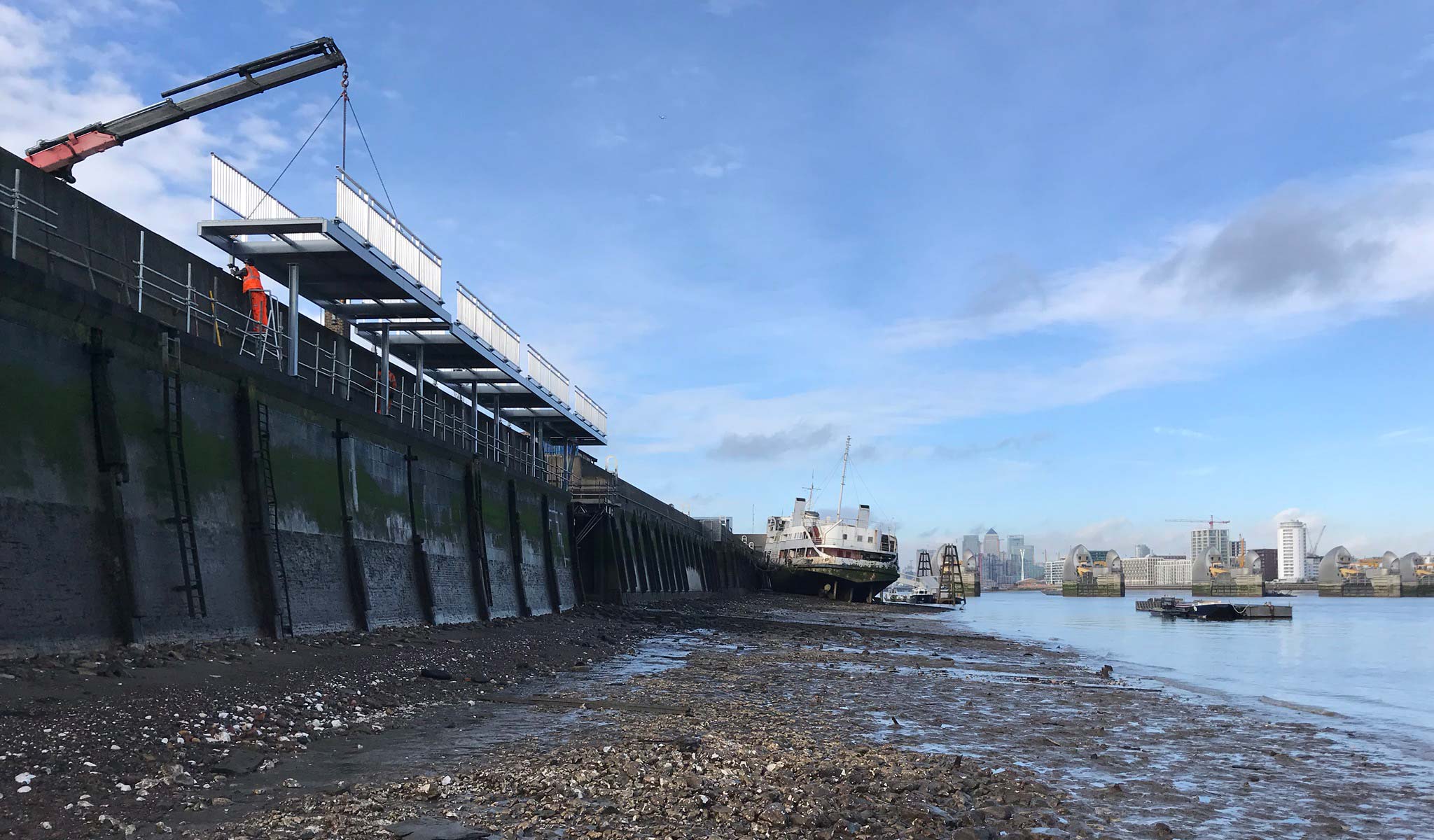
river
Access
public
Safety
environmental
Enchancements
stakeholder
Engagement
cost & time
Efficiencies
management of
Licences & Permits
The Thames Pathis a near-continuous 184 mile greenway for non-motorised users along the bank of the River Thames. However there was a missing section through Charlton Riverside linking King Henry’s Wharf to Warspite Road, approximately 275m long, known locally as the ‘Missing Link’.
We completed the design and construction of a new 275m long elevated walkway to join up two sections of the Thames Path in Greenwich comprising a new demountable sectional steel walkway and cycle path on top of the Thames flood wall. Other works included access ramps, balustrades, handrailing, lighting, kerb replacement, brickwork and concrete bollards.
Using innovation for time and cost efficiencies
We were able to implement a number of innovative ideas to deliver a successful and efficient project. These included changing the design of the support legs in the ramp to reduce the length of steel and increase the volume of concrete, proposing shallower holes that required less excavation, altering the sequence to complete works to a water main last, thereby reducing disruption on the road and a volumetric concrete lorry mixed bespoke concrete on site for small quantities in tight access
Change of Approach
The site presented a number of access difficulties which required a change in approach. The original plan was to use a mobile crane to transfer the walkway panels, that weighed up to 5 tonne each, from lorries onto a barge. That would then work its way eastwards installing the panels as the tide allowed. This method was changed when it became apparent that, with careful planning and good communication with the various occupants of Cable Wharf, the installation could be carried out using a combination of hiab lorries and mobile cranes, thereby reducing the complexities of tidal working and in turn cutting costs.
2009
Seabright Frontages
The Environment Agency
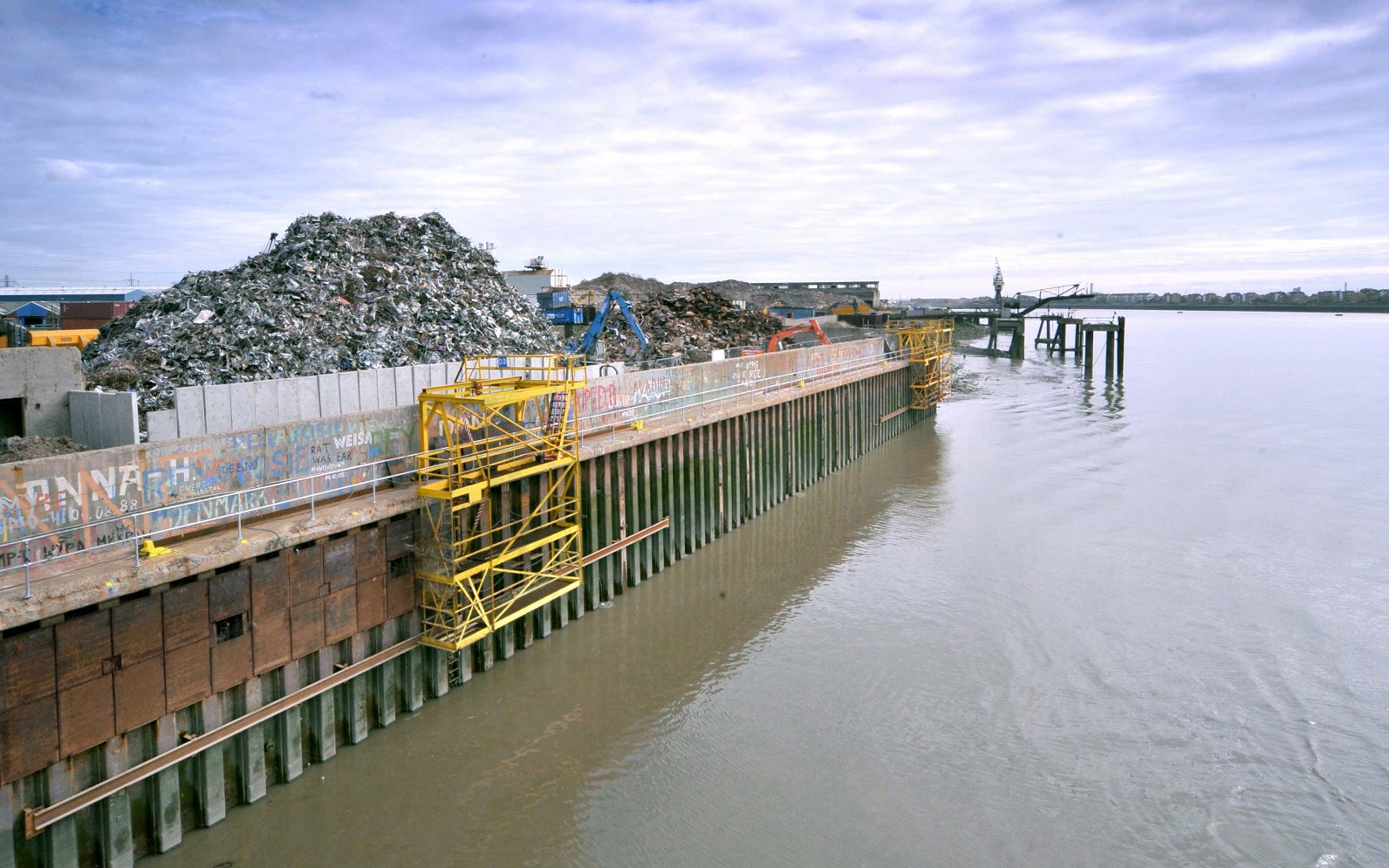
multiple
Disciplines
working in an
Operational Wharf
stakeholder
Engagement
public
Safety
Mackley was contracted to improve the flood defences at Seabright, at the confluence of the Thames and Barking Creek. Seabright is an active, working wharf used as a scrap metal yard. Our works were 180m of welded steel plate sheet pile repairs which involved welding the plates onto the top 3m of the frontage and then filling the void with concrete to provide an additional 25 years of life to the frontage.
Innovation to minimise disruption
To access the works, we designed a bespoke gantry platform that was cantilevered out from the wall and mounted on tracks. The tracks enabled the platform to move easily to any part of the wall. Working from this platform enabled the scrap yard to remain active without our work impacting their operations. We also constructed 2 relieving platforms with CFA piles and a ground slab to take the weight of the scrap metal stored in the yard and prevent the load from coming onto the steel sheet piles.
